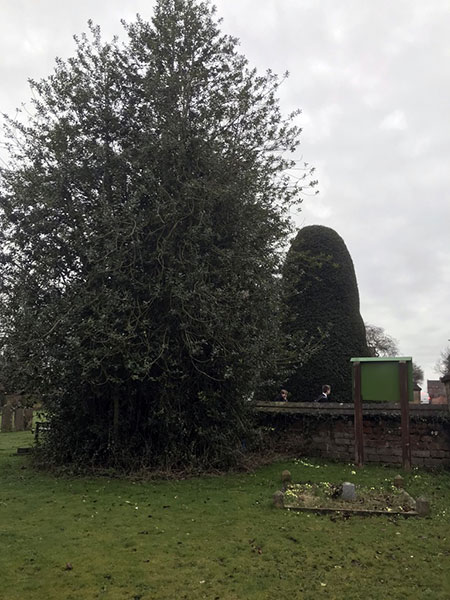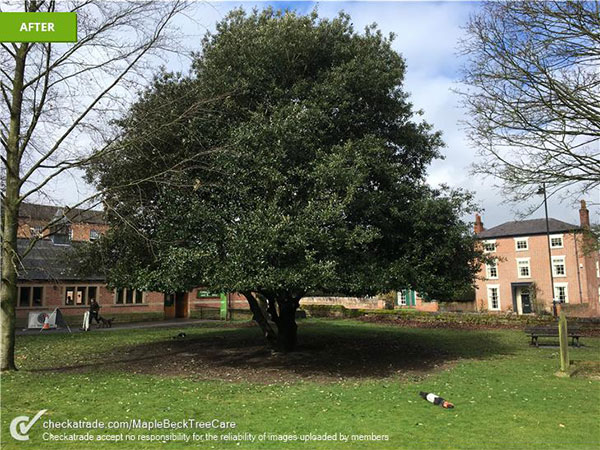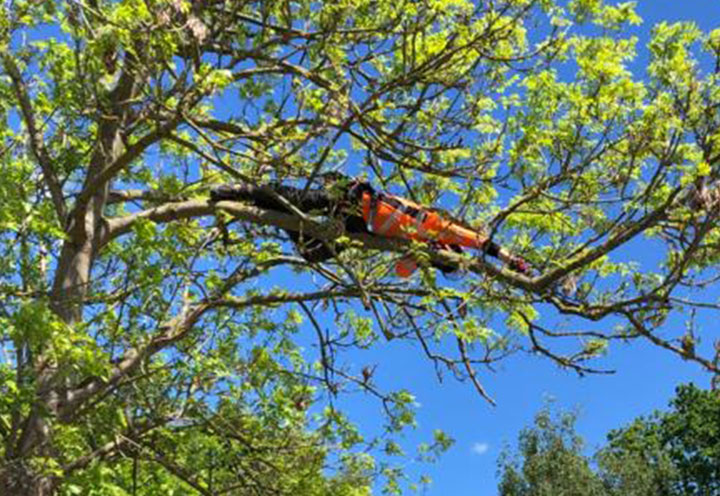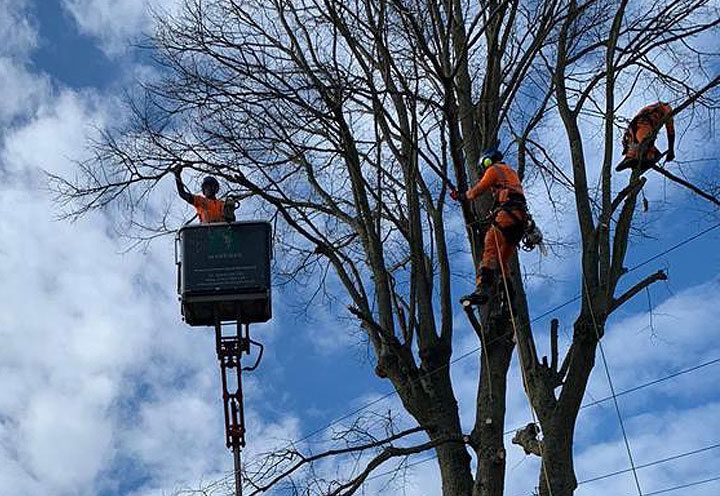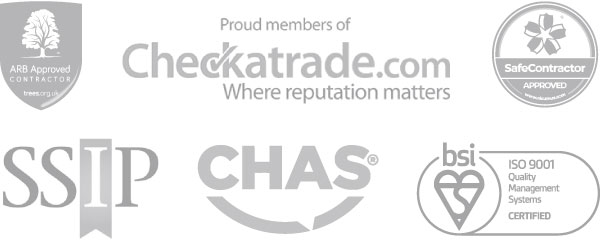Crown Lifting
Tree Crown Lifting Service
Crown Lifting is the removal of selected branches and limbs from the lower part of the trees crown, which raises the clearance above ground level.
Extensive crown lifting should if possible be phased over a number of years. With a view to providing some opportunity for both physiological and biomechanical reactions to compensate for the wounds and branch removal, inflicted upon the tree.
Crown lifting on a mature tree should be avoided or restricted to secondary or minor branches wherever possible.
Branches that are removed in a close proximity to one another, could cause problems in the respect of cavity could originate closely to one another and could potentially coalesce.

Crown Lifting Before

Crown Lifting After
Crown Lifting Benefits
Crown Lifting is more often than not used to facilitate site usages as opposed to aesthetic purposes. Raising the clearance above ground level in your garden could ease some of the following:
- Cutting you lawn, enabling you to use a lawnmower easier around the tree.
- Improve the light to the understory vegetation which could help prevent poor form and suppression of beneath vegetation
- Prevent damage to neighbouring structures that could be damaged by branches rubbing.
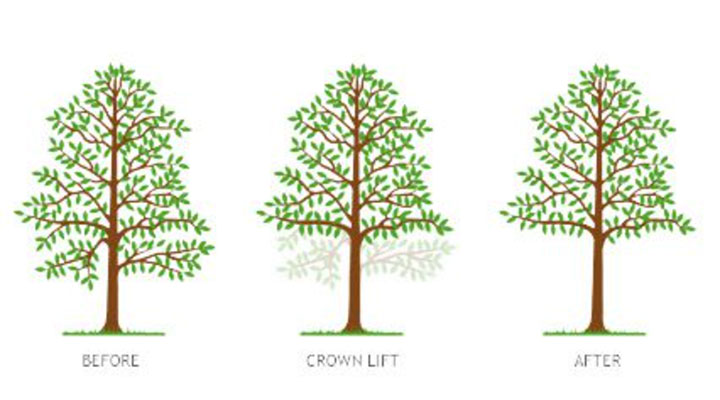
Please note the lower branches of trees could have the benefit of a superficial physical barrier preventing you from causing compaction around the basal area and the root system.
If you own trees that adjoin the highways and as a consequence could potentially cause an obstruction to the users of the Highways, Crown Lifting could be beneficial or may even be requested or enforced upon you.
- 5.2 metres is considered to be the desired height clearance above most roads, this height enables high sided vehicles to pass through with ease and no damage to either the vehicle or tree. A good lateral clearance from branches encroaching the road will also be achieved by removing the lower branches.
- 2.8 metres above footpaths
Some trees do not lend themselves to excessive Crown Lifting as well as others, for example, Fagus sylvatica (Common Beech) would not be considered a good candidate for such remedial works unless phased or sympathetically carried out ensuring not to many branches are removed because the bark is considered to be fairly thin potentially making the species in general vulnerable to sun scorch.
With most remedial Arboricultural works the rule of 1/3 should be applied if reasonably practicable and within the work specification to decrease any adverse effects as a consequence of the pruning work. The rule of 1/3 is relatively simple you should avoid removing a branch that is in excess of 1/3 the diameter of the branch being retained (reduced back to).

